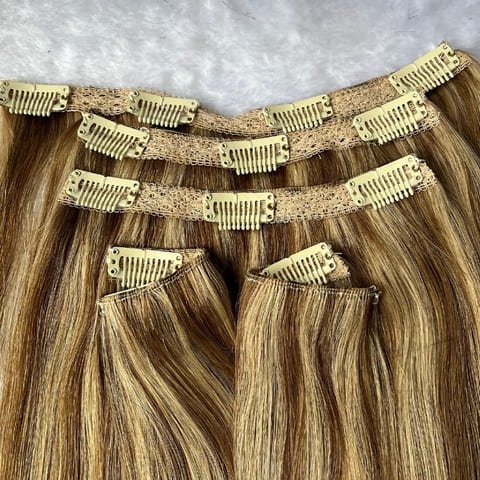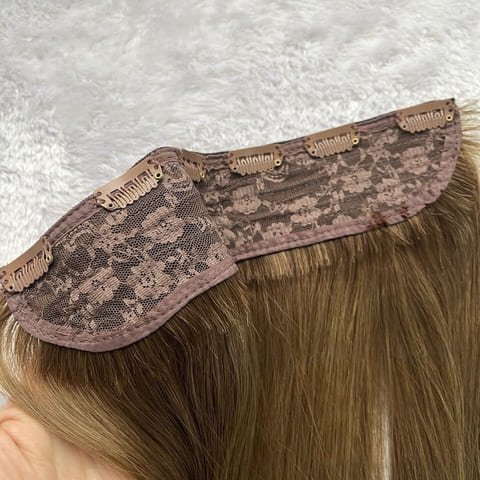Tired of waiting for your hair to grow out? Look no further! Finding the best method for getting hair extensions can be a game-changer, but with various options available, how do you know which one to choose? Whether it’s tape-ins, clip-ins, or micro-bead extensions, each method offers its own set of pros and cons. In this guide, we’ll take a deep dive into the world of hair extensions to help you determine the most suitable option for your hair type, lifestyle, and budget.
From the seamless blend of tape-in extensions to the versatility of clip-ins, we’ll explore the factors to consider before making a decision. With insider tips and expert advice, you’ll gain valuable insights into choosing the perfect method that aligns with your preferences and maintenance routine. Say goodbye to bad hair days and hello to luscious locks with the right hair extension method for you!

Understanding the different methods of hair extensions
Hair extensions come in various methods, each with its unique application and maintenance requirements. It’s essential to understand the differences between these methods to make an informed decision. Whether you’re looking for temporary or semi-permanent extensions, knowing the options available will help you choose the best method for your needs.
Pros and Cons of Clip-in Hair Extensions
Clip-in hair extensions are a popular choice for those seeking a temporary solution to add length or volume to their hair. One of the major advantages of clip-ins is their versatility. They can be easily clipped in and removed, allowing you to switch up your look as desired. Additionally, clip-in extensions are relatively affordable and do not require a long-term commitment. However, they may not be suitable for those with very fine or thin hair as the clips can be noticeable, and the weight of the clips may cause discomfort with prolonged wear.
Pros and Cons of Tape-in Hair Extensions
Tape-in hair extensions are favored for their seamless blend with natural hair. The thin, flat tapes lay snugly against the scalp, making them virtually undetectable. This method is ideal for those with fine or thin hair, as the tapes are lightweight and gentle on the natural hair. Maintenance is relatively low, and the extensions can be reused with proper care. However, the initial application should be done by a professional to ensure a secure and natural-looking result. Additionally, tape-ins may require more frequent maintenance appointments compared to other methods.
Pros and Cons of Sew-in Hair Extensions
Sew-in, or weave, hair extensions are applied by braiding the natural hair and sewing the extensions onto the braids. This method is known for its durability and ability to hold up well with various styling techniques. It is suitable for those with thick, coarse, or curly hair, as the braids provide a sturdy base for the extensions. However, sew-in extensions require regular maintenance to prevent matting and tangling of the natural hair. The installation process can also be time-consuming and may cause tension on the scalp if not done carefully.
Pros and Cons of Fusion Hair Extensions
Fusion, or bonded, hair extensions involve attaching small strands of hair extensions to the natural hair using a bonding agent. This method offers a natural look and allows for versatile styling. Fusion extensions can last for several months with proper care and maintenance. However, the application process can be time-consuming, and the removal may require professional assistance to avoid damage to the natural hair. Additionally, the bonding agent used in fusion extensions may not be suitable for all hair types and could cause allergic reactions in some individuals.
Pros and Cons of Micro-link Hair Extensions
Micro-link, or micro-bead, hair extensions utilize small beads to attach the extensions to the natural hair. This method is known for its flexibility and ability to move naturally with the hair. Micro-link extensions do not involve heat or adhesives, making them a gentle option for the hair. However, the beads may be visible during certain hairstyles, and proper maintenance is crucial to prevent tangling and breakage. Regular adjustments may also be necessary to keep the extensions secure as the natural hair grows.

Pros and cons of clip-in hair extensions
When deciding on the best method for getting hair extensions, several factors should be taken into account. Consider your hair type, lifestyle, budget, and maintenance routine. For example, if you have fine or thin hair, tape-in extensions may be the most suitable option for a seamless blend. If you prefer a temporary solution, clip-in extensions offer versatility and convenience. Additionally, consider the level of maintenance you are willing to commit to, as some methods may require more frequent salon visits or at-home care.
Pros and cons of tape-in hair extensions
Proper maintenance and care are essential for prolonging the lifespan of hair extensions. Regardless of the method chosen, gentle handling, regular washing, and using recommended products are crucial for keeping the extensions looking their best. It’s important to follow the maintenance guidelines provided by the extension stylist or manufacturer to prevent damage to both the extensions and natural hair. Additionally, regular maintenance appointments with a professional can help address any issues and ensure the extensions remain secure and healthy.
Pros and cons of sew-in hair extensions
Choosing the best method for getting hair extensions ultimately comes down to your individual preferences and lifestyle. Consider how each method aligns with your hair type, styling preferences, and daily activities. If you lead an active lifestyle and frequently engage in physical activities, a method that offers secure attachment and minimal maintenance may be more suitable. On the other hand, if you enjoy experimenting with different hairstyles and looks, a versatile and easy-to-manage method may be preferable.

Pros and cons of fusion hair extensions
In conclusion, the best method for getting hair extensions depends on a variety of factors, including your hair type, lifestyle, and maintenance preferences. Each method offers its own set of advantages and considerations, so it’s essential to weigh the pros and cons before making a decision. Consulting with a professional hairstylist experienced in hair extensions can provide valuable insights and recommendations tailored to your specific needs. With the right method chosen, you can say goodbye to bad hair days and hello to luscious locks that enhance your natural beauty. Choose wisely, and enjoy the transformation that hair extensions can bring to your overall look and confidence!
By understanding the various methods of hair extensions, considering the pros and cons, and evaluating your personal preferences, you can make an informed decision that will leave you feeling satisfied and confident with your choice. Whether you opt for clip-ins, tape-ins, sew-in, fusion, or micro-link extensions, the key is to select a method that complements your natural hair and aligns with your lifestyle. With the right method and proper care, you can achieve the luscious locks you’ve always desired, elevating your style and confidence to new heights.
Pros and cons of micro-link hair extensions
Fusion hair extensions, also known as bonded extensions, are attached to the natural hair using keratin bonds. One of the significant advantages of fusion hair extensions is their natural look and feel. The keratin bonds are virtually undetectable, providing a seamless blend with your natural hair. Additionally, fusion extensions can last for several months with proper care, making them a long-term solution for those looking to achieve length and volume.
However, fusion hair extensions have some drawbacks to consider. The application process can be time-consuming, often taking several hours to complete. Moreover, the removal process can be damaging if not done correctly, potentially causing breakage and stress on the natural hair. It’s essential to weigh the pros and cons of fusion hair extensions before making a decision.

Factors to consider when choosing the best method
Micro-link hair extensions, also known as micro-bead or micro-ring extensions, are attached to the natural hair using small, silicone-lined beads. One of the main benefits of micro-link extensions is their versatility. They allow for natural hair movement and are less damaging than other methods. Additionally, micro-link extensions can be adjusted and repositioned as the natural hair grows, making them a flexible option for long-term wear.
On the flip side, micro-link hair extensions require regular maintenance to prevent tangling and ensure the beads remain secure. Improper installation or maintenance can lead to hair breakage and damage. It’s crucial to consult with a professional stylist who has experience in applying and maintaining micro-link extensions to avoid potential issues.
Maintenance and care for different hair extension methods
When choosing the best method for getting hair extensions, several factors should be taken into account. Consider your hair type, lifestyle, and maintenance routine. For example, if you have fine or fragile hair, clip-in extensions might be a better option to prevent unnecessary stress on the natural hair. Additionally, consider the level of maintenance and commitment required for each method. Fusion extensions may require more upkeep than clip-ins, so it’s essential to choose a method that aligns with your lifestyle and styling preferences.
Another crucial factor to consider is the expertise of the stylist. Different hair extension methods require specific skills and knowledge for proper application and maintenance. Research and consult with experienced stylists who specialize in the method you’re interested in to ensure a successful and satisfying experience.

Finding the best method for your hair type and lifestyle
Regardless of the hair extension method you choose, proper maintenance and care are essential for preserving the integrity of both the extensions and your natural hair. Use gentle, sulfate-free shampoos and conditioners to avoid stripping the extensions of essential oils. Brush your hair regularly, starting from the ends and working your way up to prevent tangling and matting. Additionally, avoid using excessive heat and styling products to minimize damage to the extensions.
Each method may have specific care requirements, so it’s vital to follow the guidelines provided by your stylist or the extension manufacturer. Regular maintenance appointments with your stylist will ensure that the extensions are in good condition and that any necessary adjustments are made to maintain a seamless look.
Conclusion and final considerations
When it comes to finding the best hair extension method for your hair type and lifestyle, there is no one-size-fits-all solution. Consider consulting with a professional stylist who can assess your hair and recommend the most suitable method based on your hair texture, density, and desired look. Be open to trying different methods and discussing your preferences with the stylist to find the perfect fit for you.
If you lead an active lifestyle and require flexibility with styling, clip-in extensions may be the ideal choice. On the other hand, if you’re looking for a semi-permanent solution that requires minimal daily maintenance, fusion or micro-link extensions could be the answer. Ultimately, the best method for getting hair extensions is one that seamlessly integrates with your natural hair and enhances your overall look without compromising its health.





